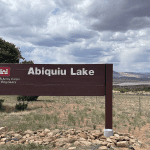- 96.8% of water quality results met state standards.
- High E. coli levels persist in some sites, linked to livestock.
- Rising water temperatures threaten aquatic ecosystems.
- Monitoring guides park managers to protect water resources.
December 17, 2024 — Water quality across national parks in the Northern Colorado Plateau remains largely excellent, according to a report from the National Park Service (NPS) . Between 2019 and 2022, nearly 97% of water quality evaluations met state standards, underscoring the success of ongoing conservation efforts. However, concerns persist over E. coli bacteria levels, rising water temperatures, and dissolved solids, all posing risks to ecosystems.
. Between 2019 and 2022, nearly 97% of water quality evaluations met state standards, underscoring the success of ongoing conservation efforts. However, concerns persist over E. coli bacteria levels, rising water temperatures, and dissolved solids, all posing risks to ecosystems.
Good News and Some Challenges.
The NPS and its partners monitor rivers, streams, and lakes in iconic parks like Arches, Bryce Canyon, Canyonlands, and Zion. Scientists evaluate water quality through monthly testing at various sites, measuring everything from temperature to bacteria levels. Out of more than 22,000 evaluations, 96.8% met state requirements, consistent since the previous report (2016-2018).
Still, challenges remain:
- E. coli Contamination: High concentrations of Escherichia coli were detected in multiple parks, including Arches, Capitol Reef, and Zion. The bacteria, originating from mammal waste, are often linked to upstream livestock grazing and trespassing animals within park boundaries.
- Rising Water Temperatures: Warmer waters were reported in the Colorado River (Canyonlands), Fremont River (Capitol Reef), and Virgin River (Zion). Aquatic species like fish and insects are particularly vulnerable to heat, as many depend on specific temperature ranges to survive. The warming trend correlates strongly with rising air temperatures in the region and is expected to worsen with climate change.
- Dissolved Solids: While often naturally occurring from the weathering of local rock, high total dissolved solids in some streams may also reflect agricultural irrigation runoff. Though not immediately harmful, these solids can degrade water quality over time.
Addressing the Issues
The NPS compares monitoring data to state water standards to identify problems early and guide mitigation efforts. For example, Utah and Colorado agencies are actively working to reduce selenium concentrations in the Upper Colorado River basin. At Zion National Park, staff are collaborating with researchers to address harmful algal blooms, which have produced toxins that have exceeded public health limits in recent years.
Water quality monitoring works like a health check-up for rivers, enabling park managers to catch problems before they worsen. It also provides a “report card” on management efforts, ensuring these waterways remain pristine for ecosystems and visitors.
Despite localized challenges, water bodies in the Northern Colorado Plateau parks continue to support healthy ecosystems and provide breathtaking scenery for millions of visitors. With continued monitoring and science-driven management, the NPS aims to preserve these vital resources for future generations. As climate pressures increase, protecting clean, reliable water in the semi-arid West remains more critical than ever.
~~~
Image via the National Parks Service : Map of parks monitored for water quality in the Northern Colorado Plateau Network, October 2018 – September 2022.
: Map of parks monitored for water quality in the Northern Colorado Plateau Network, October 2018 – September 2022.





Leave a Reply